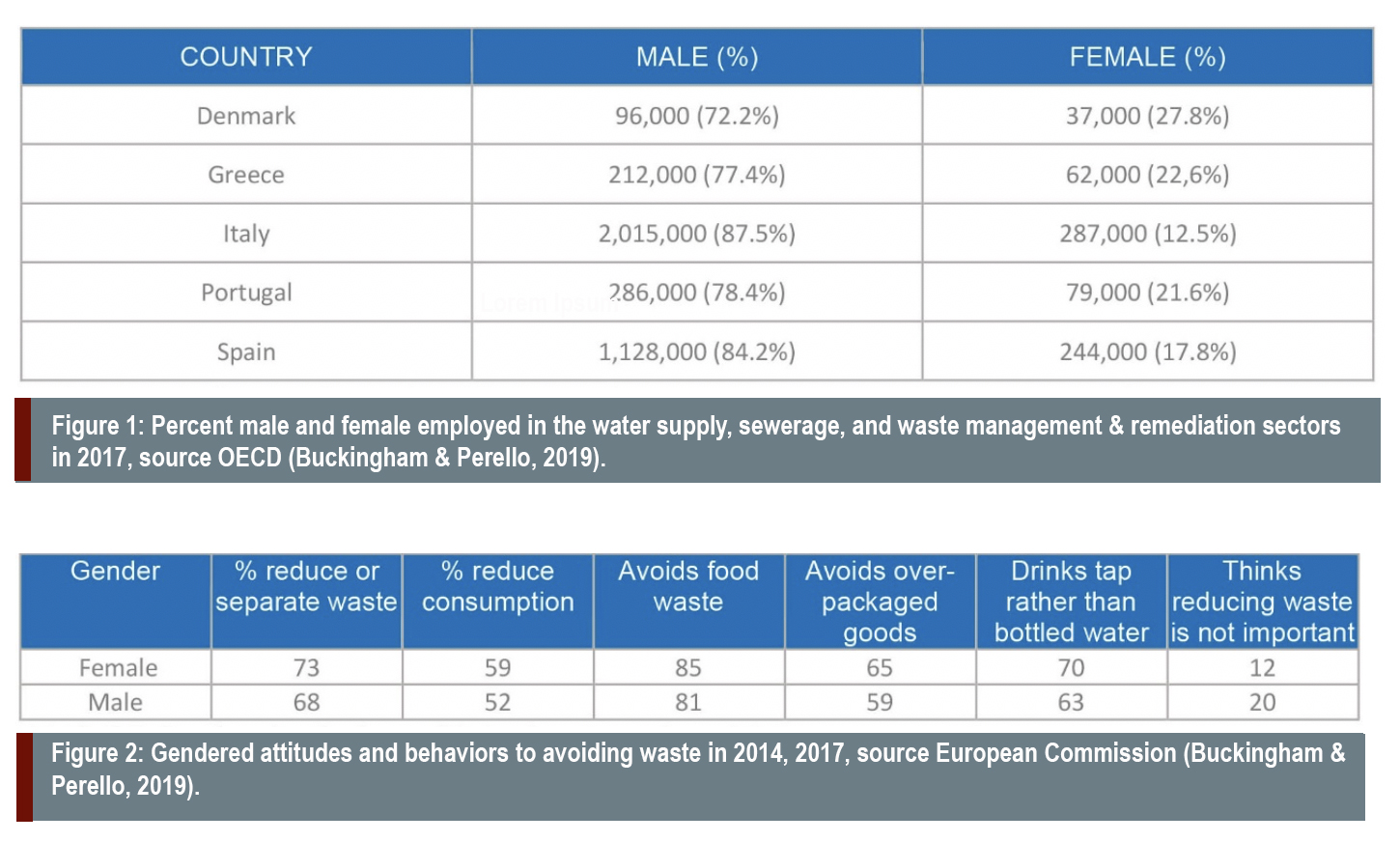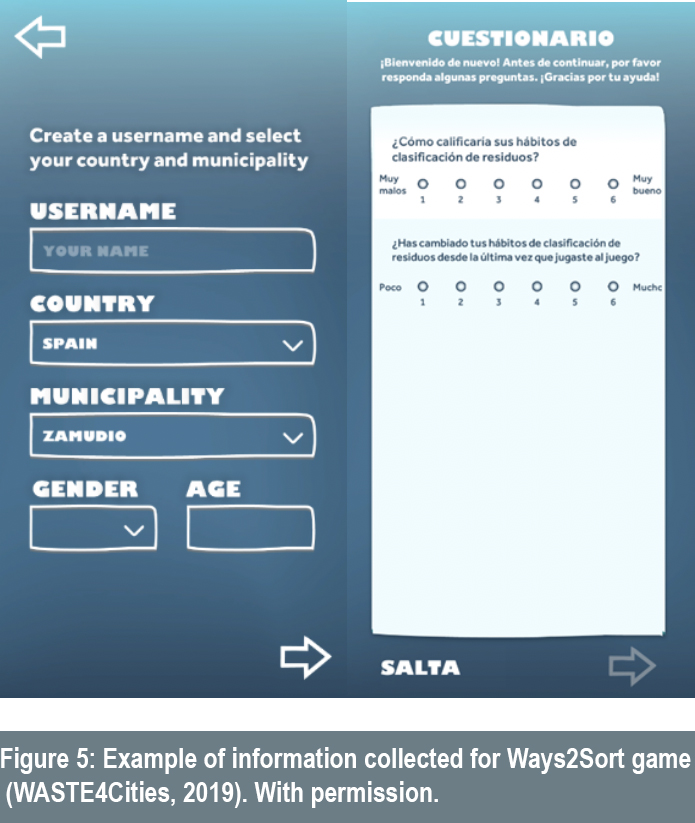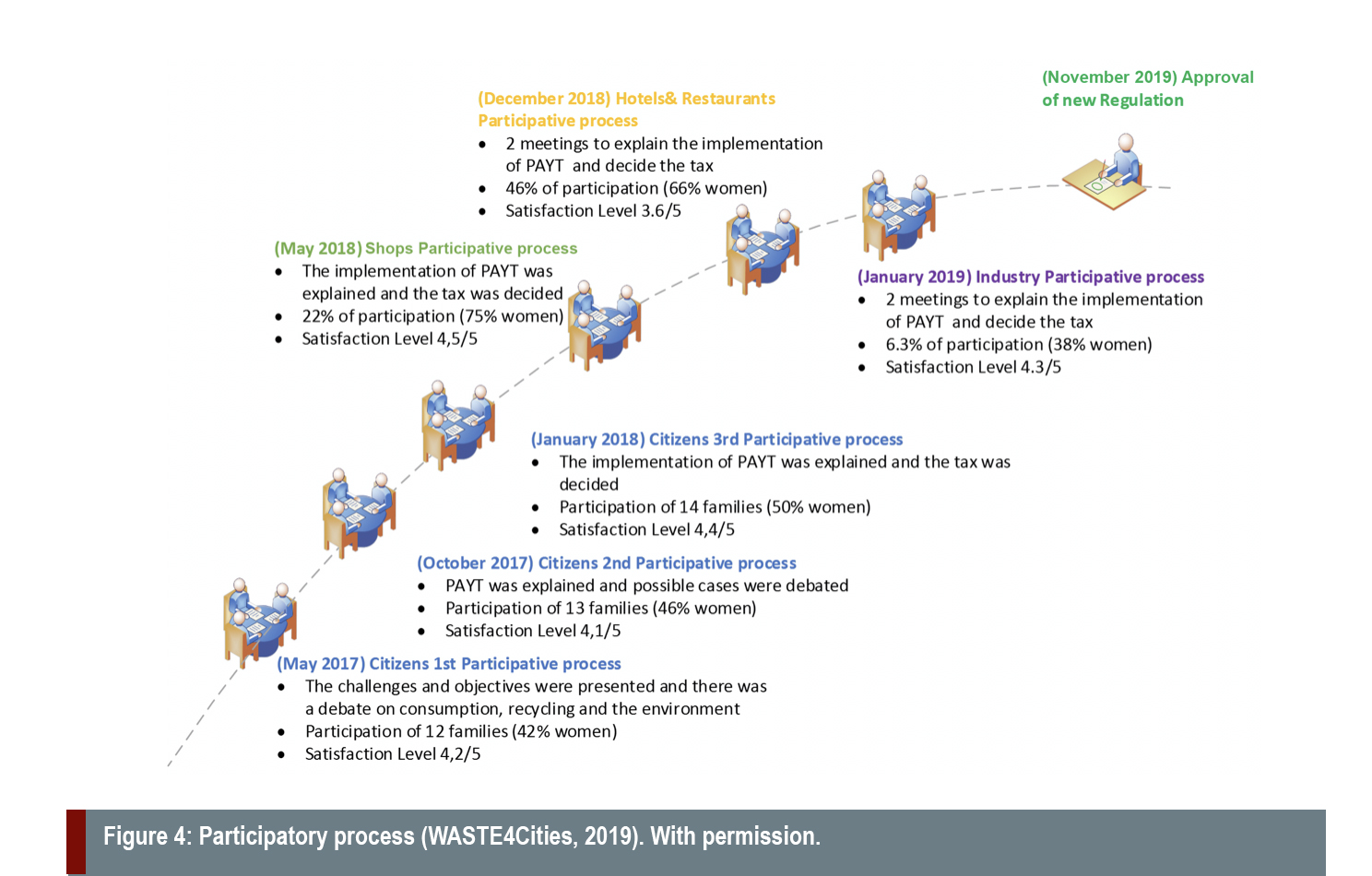Sex & Gender Analysis
Case Studies
- Science
- Health & Medicine
- Chronic Pain
- Colorectal Cancer
- Covid-19
- De-Gendering the Knee
- Dietary Assessment Method
- Gendered-Related Variables
- Heart Disease in Diverse Populations
- Medical Technology
- Nanomedicine
- Nanotechnology-Based Screening for HPV
- Nutrigenomics
- Osteoporosis Research in Men
- Prescription Drugs
- Systems Biology
- Engineering
- Assistive Technologies for the Elderly
- Domestic Robots
- Extended Virtual Reality
- Facial Recognition
- Gendering Social Robots
- Haptic Technology
- HIV Microbicides
- Inclusive Crash Test Dummies
- Human Thorax Model
- Machine Learning
- Machine Translation
- Making Machines Talk
- Video Games
- Virtual Assistants and Chatbots
- Environment
Waste Management: Co-Creation and Participatory Design
The Challenge
The Fifth Assessment Report of the Intergovernmental Panel on Climate Change (AR5, 2014) on urban and land use planning calls for adaptation and mitigation strategies to combat climate risk in cities. Innovative approaches to urban waste management will help reduce CO₂ emissions and enhance the sustainability of cities and regions. This case study highlights Horizon 2020 research on mainstreaming gender analysis into urban strategies for waste prevention and management.
Method: Co-Creation and Participatory Design
Participatory approaches are based on co-creation and co-design to investigate the needs of different user groups when designing new methods, tools and instruments from a gendered perspective. Both approaches are based on gendered participatory research using digital technology.
Gendered Innovations:
1. Collecting Data on Gendered Waste Behaviors and Intervening to Change User Behaviors. It is important to understand and minimize waste production in order to reduce greenhouse gas emissions. This will help cities and regions reach EU 2050 climate goals.
2. Using Participatory Gender Mainstreaming to Collect Sex-Disaggregated Data on Waste Behaviors and to Foster Women’s Participation in Waste Management. Mainstreaming gender analysis into waste management innovates and transforms how we think about waste.
The Challenge
Sustainable waste management aims to minimize waste production and reduce greenhouse gas emissions. Currently, waste constitutes 3% of the European Union’s greenhouse gas emissions (Greenhouse Gas Emission, 2018) and 0.1% of global emissions (Ritschie & Roser, 2019). These global data are probably inaccurate, since many countries are not able to calculate their waste emissions.
Scholars point out that “gender issues have been poorly understood and largely neglected in waste management and most other environmental and technical sectors” (Buckingham & Perello, 2019). This case study will analyze European Union Horizon 2020 research that has successfully addressed these issues and will highlight how sex and gender analysis can lead to innovation in this sector.
Gendered Innovation 1: Collecting Data on Gendered Waste Behaviors and Intervening to Change User Behaviors
Pioneering Horizon 2020 projects have tried to mainstream gender into all phases of waste management: design, structure, implementation and evaluation (UrbanWaste, 2019; UrbanWins, 2019; WASTE4Think, 2019). Data highlight gender inequities in the field of waste management. Most waste management employees are still men, for example (OECD, 2017—Figure 1 below). Women, by contrast, do somewhat more unpaid labor in household waste management. For example, 73% of women versus 68% of men seek to reduce waste and take time to separate waste (European Commission, 2014; Buckingham & Perello, 2019—Figure 2 below).

Method: Participatory Methods Using the ICT UrbanWaste App
The UrbanWaste app is an interactive mobile application to promote more sustainable waste behaviors. The UrbanWaste project focuses on reducing waste in eleven tourist destinations, such as Lisbon, Florence and Nice, but the approach is transferable to other cities. The app was based on a gamification model in which the user’s good practices in recycling, avoiding food waste and refilling reusable water bottles (among others) were rewarded with points.
Users are scored on the correct use of waste receptacles and on how much they promote the UrbanWaste app on social media. Users with high scores receive gifts or services from cities or participating vendors, such as restaurants. Interactive maps show the location of waste resources (recycling bins, receptacles) and water fountains (to refill reusable water bottles). The app also includes tips for sustainable behaviors, useful links (waste collection times, general rules) and the option to report problems users encounter to the city. The prototype design included gender perspectives from gender experts, gender-sensitive co-design with the whole project team, and gender as a category in the monitoring software. Evaluations confirmed that the UrbanWaste app helped users improve their waste management behaviors and helped cities facilitate more responsible user behavior.
Despite the attention given to gender in the development of the UrbanWaste app, data analysis showed that it attracted more male users, which is typical for games and electronics in general (Horelli & Wallin, 2013; EIGE, 2016). This project could have been improved by researchers using participatory methods to better capture user behaviors. It is possible that a completely redesigned user interface is needed to ensure parity in user uptake. It is also possible that engaging more men is a positive outcome since women are already more motivated to reduce waste.
For data collection, the UrbanWasteApp project included the non-binary gender category “other.” For this project, the designers expected people who do not identify as a woman or a man to choose the “other” category. It is possible that in the future better designations will be devised. One possibility could be also “diverse”, which is a third category used for the collection of socio-economic statistical data, for example in Germany.
Gendered Innovation 2: Using Participatory Gender Mainstreaming to Collect Sex-Disaggregated Data on Waste Behaviors and to Foster Women’s Participation in Waste Management
To reduce waste and improve reuse and recycling rates, a number of municipalities have developed programs that include:
Take for example Zamudio (Basque Country, Spain), a community with around 3,200 residents. The PAYT project developed there included seven industrial areas and the largest science and technology park in the province. Industrial waste represented 68% of the total waste generated in the municipality. During the two-year project, the city organized workshops with citizens and representatives from the service sector and industry to discuss the regulations and rates governing PAYT. The participants could also evaluate the quality of the workshops (satisfaction level—5 very good). One objective was to foster women’s participation in these workshops to increase their representation in the field of waste management.
- • monitoring systems for dustbins/trash cans and lorries/trucks
- • decision-making information systems for short-term and long-term planning
- • economic instruments (Pay As You Throw, or PAYT)
- • incentives (WASTE4think)
Method: Information on Waste-Generation Patterns via Citizen Cards (WASTE4Think)

In the particular case of Zamudio, waste generation is monitored through the use of electronic locks on containers with chambers that restrict waste volume. Users are identified by their “citizen card”—cards they use for other municipal services. PAYT is calculated per household when the different containers are opened (e.g. residual, glass, plastic, or organic waste). Each member of a household has their own citizen card so that use can be analyzed by gender and age (Waste4Think, 2019).
Method: Behavior-Analysis Data from Serious Games and Digital Teaching Units (WASTE4Think)
One of these projects is a smartphone game called Ways2Sort, which teaches users how to sort 200 waste items of different types, e.g. glass, biowaste, etc. Preliminary data about sex and age, as well as information about habits and previous knowledge, were collected during citizen-card logins. To foster citizen participation, tests were performed for particular target groups (schoolchildren, university students, professionals in the sector, etc.).
Conclusions
The European Union and the Horizon 2020 projects have shown that integrating gender into urban policies and planning processes for waste management will help reduce waste and encourage a circular economy. Mainstreaming gender analysis in waste management means considering gender at every stage of the process.
Next Steps
Important steps to foster gender analysis in waste management include:
1. Raising gender awareness in this field of research and practice;
2. Gathering sex-disaggregated and gender-disaggregated data in the waste management sector;
3. Gathering data on gendered attitudes and behaviors with respect to waste; and
4. Employing gender-sensitive participatory methods.
Works Cited
Buckingham, S., & Perello, M. (2019). Urban Waste: Urban strategies for Waste Management in Tourist Cities. D3.6: Gender Mainstreaming in Waste Planning. http://www.urban-waste.eu/wp-content/uploads/2019/07/D3.6-Gender-mainstreaming-in-urban-planning-case-on-waste-management.pdf
Greenhouse Gas Emission Statistics – Carbon Footprints. (2018). European Commission. http://ec.europa.eu/eurostat/statistics-explained/index.php/Carbon_dioxide_emissions_from_final_use_of_products
European Institute of Gender Equality. (2016). Gender and Digital Agenda. Luxembourg: Publication Office of the European Union.
EUSKALTEL Encounter (2019). https://ee27.euskalencounter.org/
Horelli, L., & Wallin, S. (2019). Gender-sensitive e-planning for sustaining everyday life. In I. Sánchez de Madariaga & M. Roberts (Eds.). Fair Shared Cities. The Impact of Gender Planning in Europe. New York: Ashgate, pp. 193-230.OECD.https://stats.oecd.org/viewhtml.aspx?datasetcode=ALFS_EMP&lang=en#
Ritschie H., & Roser, M. (2019). CO₂ and greenhouse gas emissions. Our World in Data. https://ourworldindata.org/co2-and-other-greenhouse-gas-emissions#per-capita-co2-emissions.
UrbanWins Toolkit: A Guide on Urban Metabolism and Participatory Processes for More Efficient Urban Waste Policies (2019). https://www.urbanwins.eu/wp-content/uploads/2019/05/190527_UW_Toolkit_final_version_A4_v2_PRINT.pdf
Waste4think. (2019). Ecosolutions. https://waste4think.eu
Innovative approaches to urban waste management can help reduce CO2 emissions and enhance the sustainability of cities and regions. This case study considers how attention to gender can enhance urban strategies for waste prevention and management, and support the UN Sustainable Development Goal # 11—Sustainable Cities and Communities.
The UrbanWaste app is an interactive mobile application to promote more sustainable waste behaviors. The UrbanWaste project focuses on reducing waste in eleven tourist destinations, such as Lisbon, Florence, and Nice, but the approach is transferable to other cities. The app was based on a gamification model in which the user’s good practices in recycling, avoiding food waste, and refilling reusable water bottles (among others) were rewarded with points. The UrbanWaste app attracted more male users, which is typical for games in general. Engaging men may be a positive outcome since women are already more motivated to reduce waste. A more gender-sensitive design may help equalize users by gender. Other apps encourage waste recycling. “Pay As You Throw” or PAYT is a program in Zamudio (Basque Country, Spain). Participants’ waste behaviors are monitored by “citizen cards”—used to keep track of use of municipal services. PAYT is calculated per household when the different containers are opened (e.g., residual, glass, plastic, or organic waste). Each member of a household has their own citizen card so that use can be analyzed by sex and age.






